Picnic At Hanging Rock (1975)
Directed by: Peter Weir
Written by: Cliff Green, Joan Lindsay
Starring: Anne-Louise Lambert, Dominic Guard, Karen Robson, Rachel Roberts
Australia
AVAILABLE ON 4kUHD and STANDARD BLU-RAY: MAY 1ST, from SECOND SIGHT
RUNNING TIME: 115 min/ 107 min
REVIEWED BY: Dr Lenera, Official HCF Critic
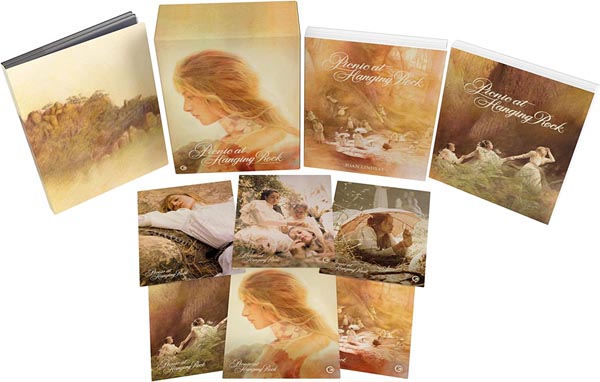 As stated by the introductory text to the film:
As stated by the introductory text to the film:
On Saturday 14th February 1900, a party of schoolgirls from Appleyard College picnicked at Hanging Rock near Mt. Macedon in the state of Victoria. During the afternoon several members of the party disappeared without trace….
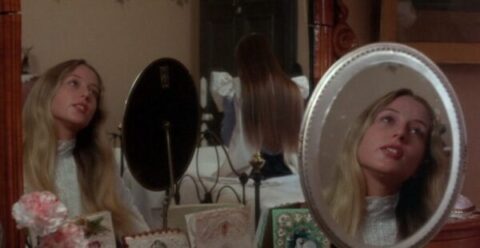
I first watched this beautiful enigma of a movie when I was about twelve years old, and I distinctly recall the experience even though it was a very long time ago indeed. It was all rather slow and “arty-farty” for my tastes at the time, yet I was fascinated by the story – before being incredibly frustrated by the ending, which not only failed to give me any answers but didn’t even contain much of a climax. What a let down! Fast forward to 2023 and I adore the movie, yet can totally understand why many viewers feel similarly to how I originally did. It seems to be one of those films people love or are hugely irritated by [terms like “hate” seem too much], and there’s certainly a very good reason for the latter. Though Picnic At Hanging Rock contains several obvious themes like sexual repression, coming of age and the incongruity and arrogance of English settlers in Australia making no attempt to properly adapt to this brave new world they’ve found themselves in, reduced to its most basic level it’s a supernaturally tinged mystery that doesn’t give you a solution, yet fans, of which I became one over the years, consider the film to be special precisely because of this. It does tease the observant viewer with certain hints and allusions, but refuses to settle on anything. What’s really interesting is that Joan Lindsay, who wrote the novel of the same title which inspired the film, wrote a final chapter which did explain it all, but decided that it shouldn’t be published until five years after her death. Chapter Eighteen appeared posthumously in 1987 as The Secret of Hanging Rock. I’ve read it, and it’s very odd. It has some crazy things happening yet still refuses to really explain them, and it’s also written in a different style to the rest of the book which has led some to claim that Lindsay didn’t even write it. Maybe the truth about this will never be known – which is rather appropriate really.
Both book and film give the impression that they’re based on a true story, though Lindsay, who claimed she had a strange experience at Hanging Rock at the age of three, has always been vague about the matter. Searches for evidence have proved fruitless, but the subject has remained a source of great interest in Australia, where in 1980 a book of hypothetical solutions by Yvonne Rousseau was published called The Murders at Hanging Rock. The film was Peter Weir’s [The Truman Show, The Mosquito Coast] second feature after The Cars That Ate Paris, and was made for a very low budget. In casting the pupils of Appleyard College, he ended up searching for unknown girls from outside the cities, looking for the right “innocent face” to fit the film, but this meant that, apart from Anne-Louise Lambert, none of the others had any acting experience, and their amateur performances meant Weir had to cut out much of their dialogue or have it re-dubbed by others. Ingrid Mason was originally cast as Miranda, but she was demoted to a minor role and replaced by Lambert, while Rachel Roberts took over the role of Mrs. Appleyard at very short notice when Vivien Merchant became ill. During shooting, several odd things occurred at Hanging Rock like a rainstorm causing it to pour everywhere around the location but leaving it totally untouched by water, and Lambert, playing Miranda, suddenly seeing Lindsay stumble towards her, hug her and call her Miranda. Executive producer Patricia Lovell was so scared by the place that she didn’t return until ten years later and then left immediately. The film was a sensation in Australia and kick-started its film industry, though it didn’t get an American release until Weir’s next film, The Last Wave had come out in 1978. In 2008 Weir put together his Director’s Cut which, unusually for such things, is shorter than the theatrical version. For more on that, including my personal response to seeing this version unknowingly, refer to the Special Features section of this review.
The lingering opening shot is just perfect for what follows, Hanging Rock materialising out of fog above the desert, before we dissolve to a closer view. A female voice intones, “What we see, and what was seen, about a dream, a dream within a dream”, courtesy of Edgar Allan Poe, his poem called A Dream Without A Dream, as we move across some dried grass to alight on Appleyard College and the pan-flute music which will stick in your head for ages afterwards kicks in. It’s morning, and time for the residents to get up, so we see lingering images of white-clad girls; whispering, playing cards, washing, putting om corsets and presenting Valentine’s cards with poems in them to each other. The school seems to be a place bursting with repressed and developing sexuality, much of it seemingly of a Sapphic kind, with most seeming to have a crush on the beautiful Miranda, who tells her friend Sara that she “must learn to love someone else apart from me, I won’t be here for much longer”. Of course there’s an unbending figure of authority in the form of Mrs. Appleyard, who seems to be especially cruel to poor Sara, an orphan and a charity pupil who’s not allowed to go on the picnic to Hanging Rock, ostensibly because she hasn’t memorised a poem. Her staff include the remote mathematics mistress Miss Greta McCraw who’s said to have a “masculine” intellect [hmmm], the young and beautiful Mademoiselle de Portiers who teaches French and deportment, and the jittery Miss Lumley, who’s desperate to please the formidable Mrs. Appleyard. The girls ride to Hanging Rock, which is, as Miss McCraw tells us, one million years old with rocks around it which are 350 million years old! The picnic goes ahead, cinematographer Russell Boyd’s work being especially gorgeous here the best “lost summer” feel put on film, but a flock of birds suddenly appears for no good reason, and two watches stop [apparently Lindsay actually had some strange power that enabled her to stop people’s watches].
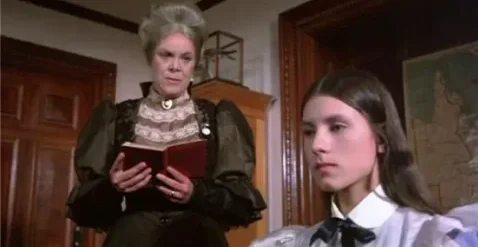
Miranda and classmates Marion, Irma, and Edith set off to explore, unaware they’re being watched by Michael, a well-off young Englishman who’s out with his parents and who immediately falls in love with Miranda, and his Australian friend, the family’s valet Albert, who’s somewhat cruder in his comments about the girls than Michael. Boyd gives us a great 360% shot where the camera leaves the girls trekking to pan around the area before regaining contact with them higher up. It looks like there are human faces in the rock formations and dark passages which look rather sexual. The seemingly bewitched girls do some kind of nature dance, fall onto the ground and then, except for Enid who finds the place “nasty”, enter a crevice. It’s all quite frightening even if the horrid sound effects and well chosen angles are doing all the work. Then Edith runs screaming down the Rock, the rest of the film detailing the aftermath. Is it a flaw that the most exciting scene is a third of the way through, and that things actually gets more and more leisurely afterwards – before they suddenly stops? Most movies pace themselves in such a samey fashion that it’s hard to adjust to one that does things differently. We get the expected questionings and searchings, a few more strange happenings, an almost-romance [with the male probably only interested in the female because she’s a step closer to Miranda], and no answers. It might not sound much on print, but it’s incredibly spellbinding, not to mention stunning to look at, shot through fabric so we get a diffused, soft focus look where everything looks a bit hazy. There isn’t really a climax, just some slowing down until an abrupt ending, though we do see cracks in Mrs. Appleyard’s armour, and learn that her cruelty is only because she thinks of the school first, Robert’s performance being extremely clever and subtle. After a shocking discovery, we’re told of, not shown, a character committing suicide, a scene which Weir actually shot but didn’t use, and that’s it. I think Weir should have included it, especially seeing as it was going back to the Rock for one last time.
But on the other hand, in most other films, the fact that a subplot concerning two long-lost siblings who exist in close proximity to each other goes unresolved would seem like a major problem. Here, it seems fitting. The subplot might as well not exist, but then again it’s surrounded by so much mystery, so many questions, that it somehow seems like an essential part of the piece. Maybe it’s the key to it all? More obviously important is the school’s house maid Minnie being depicted in a sexual relationship with Tom the handyman, Tom, because it provides an earthy yet stark contrast to the feeling of repressed desire which otherwise dominates. Weir likes to contrast the stiff rigidity of school rituals like dinner with and the upper-class social gatherings which Michael has to attend, with the heady sexual atmosphere of the girls when they’re away from Mrs. Appleyard, the strange power of the Rock which causes them to lose inhibitions, and the straight forwardness of Albert who’s almost always found knocking back the booze. The scenes of the two together also don’t matter in terms of the bigger picture, but yet they also do. There’s a great little moment where Michael goes to wipe the neck of the beer bottle Albert has handed him, but realises that Albert would find this offensive so stops, while Albert notices all. This is what you call great filmmaking, so much transmitted in just a couple of seconds. Michael might be the closest the film has to a hero, but he also plays the curious role of someone who bridges different worlds. He crosses the class divide to hang out with Albert, but also has Miranda seem to appear to him in the form of a swan, accompanied in one beautiful moment by Beethoven’s lovely second movement from his Fifth Piano Concerto. The pan-pipes are what you will remember, but Bruce Smeaton also composed a wonderful piece of music, used several times, which seems to build and build in anxiety without ever reaching a proper climax. It’s astonishing that there’s never been an official soundtrack release.
So what did happen at Hanging Rock, a place where time seems fractured in contrast with Appleyard College where there are time keeping devices everywhere. Enticing clues which point to the fantastic but which don’t actually explain anything range from Miss McCraw examining a book of Geometry, to a body appearing where it was earlier not present, to Mrs. Appleyard having Aboriginal relics in a draw. Hell, Valentine’s Day didn’t even fall on a Saturday in 1900. One girl is found, her state not being comparable for the time that she was missing, her feet unscarred despite having lost her shoes. and she says the most amazing things like a teacher walking about only in her underwear and the appearance of a red cloud, but she’s hardly reliable. On a more realistic basis, enough holes exist to suggest that Michael and/or Albert may have been involved and may even have committed rape, while the girls aren’t allowed to talk about some frightening event which they’re aware of. The viewer has to make up his or her mind whether to take in oblique suggestions of things like the Aboriginal “Dreamtime”, a psychic state where you can travel to the distant past or the future, which of course also ties in with the idea of the chasm between settlers from Europe and the mysteries of their ancient new home, something also explored in The Last Wave which can actually be seen as a companion piece to this film [there are also striking similarities with Nicolas Roeg’s incredible Walkabout even if they aren’t initially obvious]. Or make strong enough note of the huge amount of sexual elements and symbolism in a story which at times seems to be primarily a parable about adult sexuality corrupting and even destroying the innocence of childhood. There’s certainly a suggestion that sexuality was responsible for the disappearance of the girls. I tend to give up trying to work it all out and just prefer to enjoy the film as a work of art, yet as I type right now I feel like I want to write a separate article delving much deeper into this. I do have my own ideas…..
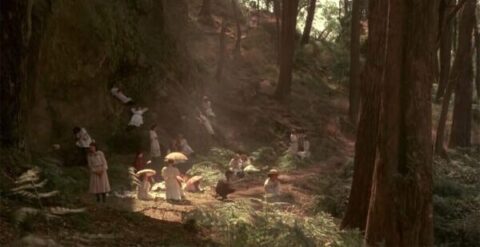
Personally I do think Picnic At Hanging Rock suffers just a little from structural and conceptual issues, but it’s so gorgeous and hypnotic that such flaws don’t really matter much. It’s a film filled with mysteries, and every time I watch it I feel the tantalising sense of a deeper significance, but maybe, in the end, we’re just being played with, and perhaps there’s actually no point to it at all, except that it’s a mystery. THAT’S the point. Even if it annoys the hell out of you, I guarantee that you’ll be thinking about this exquisite creation for days afterwards. It’s absolutely filled with a sense of yearning in a variety of forms.
Rating: 









DISC ONE – THE DIRECTOR’S CUT
When one thinks of the term “Director’s Cut”, one generally expects a film that will be longer than its theatrical version, full of great scenes that nasty studio executives forced poor filmmakers to cut. However, occasionally a Director’s Cut can be shorter. To be honest, I didn’t know about the existence of a Director’s Cut of this film until I bought a cheap R2 DVD of it and realised to my horror that certain bits were missing from a film I’d come to love! I initially thought that it was heathen DVD distributors that had decided to not let me see that touching romance-that-almost-was between Michael and Irma, or Michael and Albert chatting in Michael’s loft with some booze, or that girl crying during the memorial service, but then I researched this recut, and something made me eventually look at the back of the DVD cover where it did actually say “Director’s Cut”, though I’d missed it. Of course a filmmaker has every right to go back and make adjustments to his work, and Weir actually wanted to cut these bits, bits which grounded the film somewhat, back in 1975 to make it more enigmatic, and also to speed up the final third which does become very slow in the Theatrical Version, so in that respect you could say that Weir improved it. However, an unfortunate result of this was that for some time the film’s original version had been supplanted by the Director’s Cut and was harder to obtain. Even the great R2 three-disc version from Second Sight, which they later brought out on Blu-ray, only had the Theatrical Version in a decidedly inferior print to the Director’s Cut. At the time I felt that this was an insult to people like myself who’d grown up with the Theatrical Version.
However, here Second Sight have done something wonderful; they’ve restored the Theatrical Version in addition to the Director’s Cut. Bravo! If you’re new to this film, please watch this version first.
SPECIAL FEATURES
New Audio Commentary by film academics Alexandra Heller-Nicholas and John Nelson
Even though it’s hardly ever scene specific, this is still one of the best commentary tracks I’ve heard in ages. Heller-Nicholas and Nelson, even though they do it in a light=hearted way, express concern that they may not have done the movie justice, but they really didn’t need to. Both went to Hanging Rock as kids, Heller-Nicholas being terrified. They cover seemingly every aspect that they can; production information, Lindsay, theories on what actually happened [some of which are rather amusing], etc. They delve especially into the colonial aspect, possibly too much for some, but they never become overly dry and maintain an enthusiastic air about a film they clearly love. I learned that the characters were often based on people Lindsay knew, that Harold Holt, the Australian Prime Minister who gave “citizenship” to the Aboriginals, went swimming in the ocean and disappeared just six weeks after the publication of the book, and that there was an earlier short film made on the subject, among a lot of other things.
A Dream Within a Dream documentary [118 mins]
Made for the Australian DVD release from Umbrella Films and included on Second Sight’s UK DVD, this magnificent documentary is hands down one of the very best “making ofs” ever, never bogging down as it goes into detail about pretty much everything you could wish for, from the mouths of Weir, Lovell, co-producer Hal McElroy, Boyd, Smeaton, Lambert, Helen Morse, Christine Schuler [Enid], and John Jarratt [Albert]. It was McElroy’s idea to make the girls as fabulous-looking as possible, while we also learn that Roberts, who basically played her part for real throughout shooting, couldn’t do her first scene because the girls feared her, until she could read her lines off a board. For the picnic scene, they could only film for an hour a day because the light had to be perfect, while Michael having found some torn off clothing was actually thought up on the day. It’s perhaps a shame that the out-takes and original ending aren’t allowed to play in full. Still, kudos to the makers for allowing some interesting opinions; Smeaton considers the film “too ephemeral” while Lambert is genuinely upset about one scene missing from the Director’s Cut. This is an absolute must watch and definitely does this film justice.
DISC TWO – THE THEATRICAL VERSION
SPECIAL FEATURES
Finding the Light: a new interview with Cinematographer Russell Boyd [10 mins]
While not all of the special features from earlier disc sets are included. Second Sight, in addition to the audio commentary, have put together no less than five featurettes for this release. Boyd says here that he didn’t read the book before shooting the film because he didn’t want to be swayed from the screenplay, and discusses his techniques that helped to give the film its amazing look, from putting yellow dye on the meshing he shot through to bouncing sunlight off big white sheets. We also learn that Weir would do something that Sergio Leone was famous for doing; play music just before shooting to get everyone in the right mood. Though short, this interview is packed with interesting details.
Crashing Through Boundaries: a new interview Camera Operator John Seale [7 mins]
“We really knew no boundaries” says Searle of Australian filmmakers like Weir and Brian Trenchard-Smith who were breaking out at the time, who also tells that he remained a camera operator because he prefered it, and that Weir would do what English directors do; go to the camera operator for details, while American ones liase with the cinematographer.
An interview with author Joan Lindsay [15 mins]
In this interview, a bit of which appeared in A Dream Within A Dream, Lindsay reveals that she’s certainly written other stuff besides the novel that gave her great fame, all the way back to her childhood about which she says that she would often be “scribbling down what I liked about people”. She wrote a children’s book called Pondelayo which included staged photographs pretending to be real [a forerunner?] and remembers saying her first word “beautiful” on Hanging Rock. Of course she’s cagey about the whole “truth or fiction” thing, and finds “it extraordinary that people want answers”. I’m beginning to finally see her point.
A Lovely Day for a Picnic: a new interview with Actor Karen Robson 11 mins]
Robson played Irma in the film, but here she reveals that she actually read for the part of Irma, photographer Martin Smith telling her that she’d be perfect for it. She remembers that she, Weir and Morse visited the building that was used as the school and came across a piano with sheet music on it which was a musical adaptation of A Dream Within A Dream, which gave Weir the idea to use a line from it. She also recalls that Weir sent her a very nice letter in 2008 about cutting some of her scenes from his Director’s Cut.
Something Beyond Explanation: Thomas Caldwell on Picnic at Hanging Rock [22 mins]
One wonders by now if anything can be said about this film which hasn’t already been said on all these special features, but Caldwell gives it a good go. Some things unsurprisingly go over ground already covered, but he covers a lot so it’s certainly not all old stuff. He points out some Weir concerns which often turn up in his work like stifling social institutions, plus this film’s influence on Sofia Coppola and David Lynch [I’m a fan of the latter and never made the connection before but it now seems so obvious], and is very interesting indeed on the Miranda character i.e. “is she a victim of the masculine gaze”?
A Recollection: Hanging Rock 1900 [27 mins]
This 1975 documentary for TV, again first included on the Umbrella disc, begins marvelously with the female presenter clambering over Hanging Rock with portions of audio from the film are heard. It’s very much a promo for it, but a fair few luminaries involved are present, including an almost unrecognisable Weir who recalls filming footage while Lindsay was present, Roberts who’s “grown to like Mrs. Appleyard”, and Jarratt who sees the film largely as about “an elite which is gone”. There’s a surprising amount of film footage which is rather spoiler-ish, but then I guess every other Australian would have already read the book or know what happened in it. Obviously the picture quality of this and the Lindsay interview is highly inferior to everything else.
Outtakes [12 mins]
As far as I can tell, this is the first time this material has appeared in full on a release of Picnic At Hanging Rock. Here we get as close to the original ending as possible, so despite the rough visual quality and retakes, one can certainly get an idea of whether it would have worked or not. My personal preference for this ending to have remained has only been strengthened by seeing this. Sorry Weir!
Original long trailer [4 mins]
SET SPECIAL FEATURES
A new Second Sight 4K restoration from the original camera negative supervised and approved by Director Peter Weir and Director of Photography Russell Boyd
I can’t compare this to Second Sight’s earlier Blu-ray or Criterion’s one because I’ve never owned them, but can certainly compare it to two DVD editions. This film is in some ways a hard one to get right for HD, because of the way that it was shot, with its diffuse lighting and soft focus, but this restoration enables things to be much more clearly defined without losing sight of how things should look. That being said, the grain level varies immensely at times. Sometimes the picture is full of it, quite heavy, and other times it looks like it’s been digitally scrubbed clean of it, but who knows how difficult this particular job was? Importantly though, no detail seems to be lost, which is probably the main thing. The picture is also slightly darker, though you’d only notice this is you compared it to other versions, yet the dark, brown-heavy scenes in the school in the final third, which were previously not particularly interesting to look at, now look terrific, very Gothic in their aesthetic. Overall, despite my pickiness, Second Sight have done a fine job here.
Dual format 4 disc set featuring 2 UHDs and 2 Blu-rays both with bonus features
Includes restored versions of both Director’s Cut and original Theatrical Cut
UHDs presented in HDR
LIMITED EDITION CONTENTS
Rigid slipcase with new artwork by Thinh Dinh
Soft cover book with new essays by Daniel Bird, Kat Ellinger and Justine Smith, archive essay by Rebecca Harkins-Cross, Costume Gallery and features on the original marketing of the film and the new restoration
The original novel with exclusive cover art by Thinh Dinh
6 collectors’ art cards
For me, two decisions by Weir – the replacement of the original ending with a both nostalgic and ironic reworking of an earlier shot, and the mutilation job he did on his Director’s Cut which he claimed he originally wanted to do anyway, sour “Picnic At Hanging Rock” just a little, yet I still appreciate and love it immensely. Second Sight, who are truly impressing these days, present the iconic classic in an absolutely stunning package which must its best release ever. Highly Recommended!


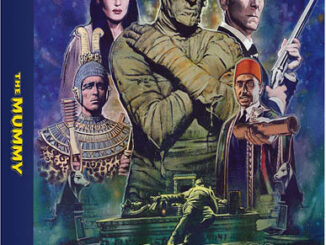
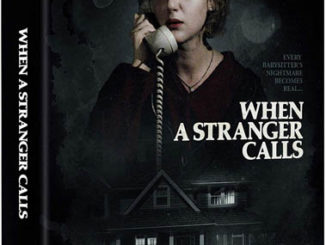
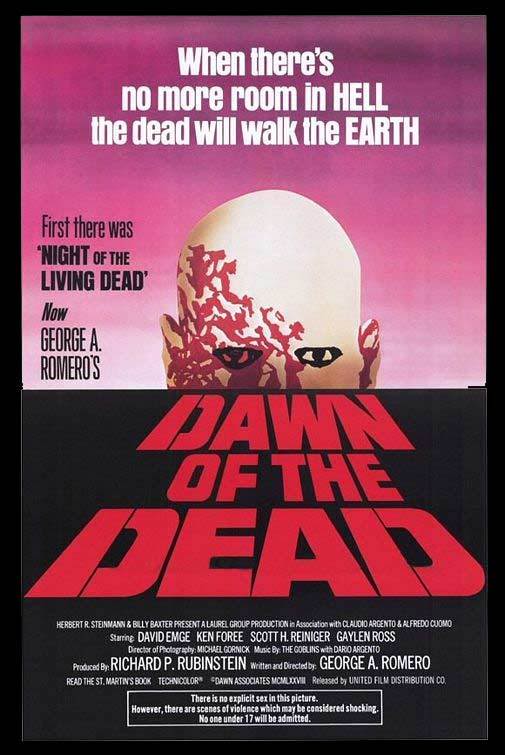
Be the first to comment